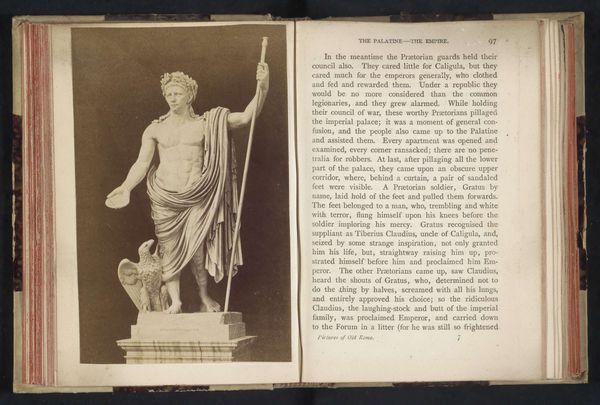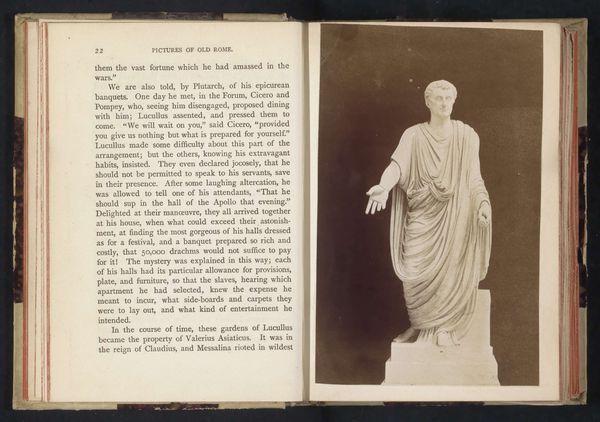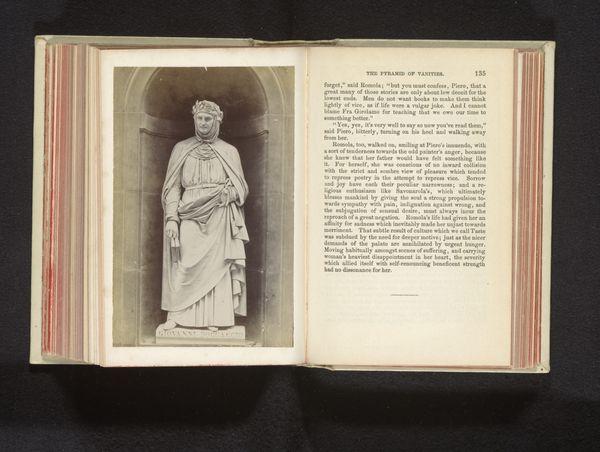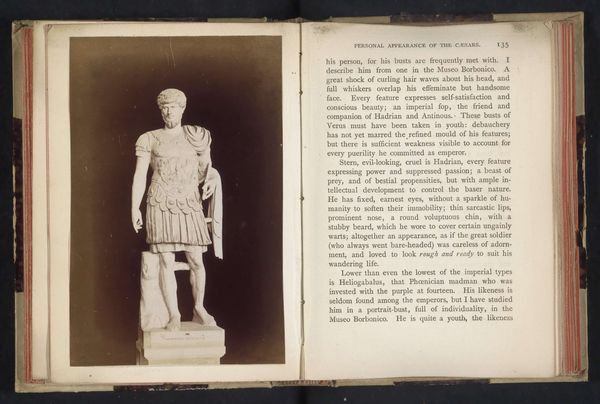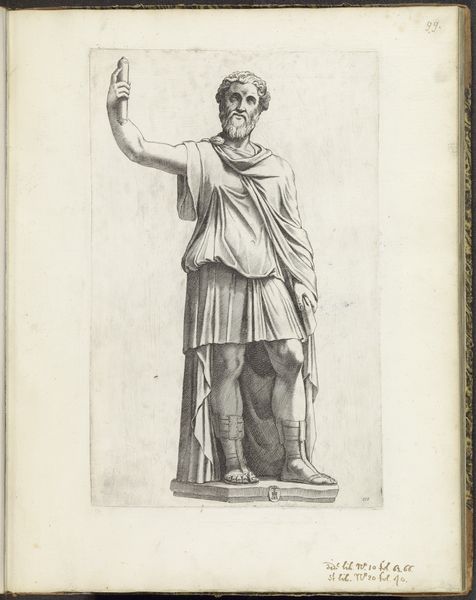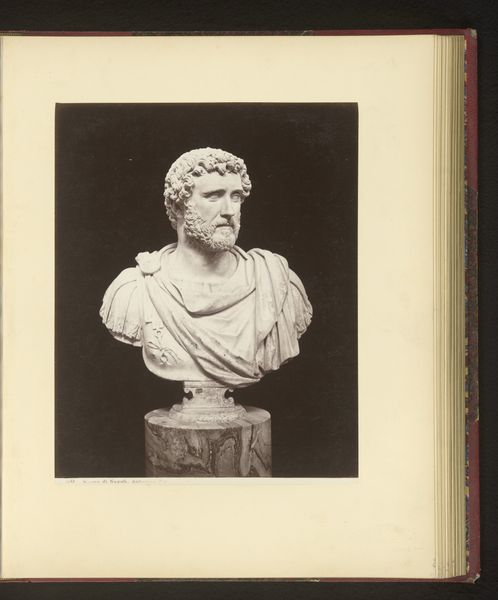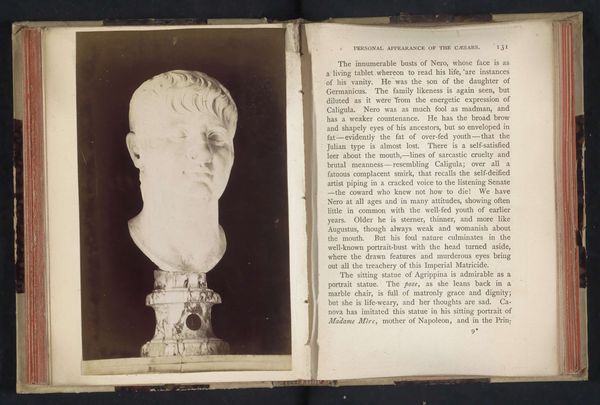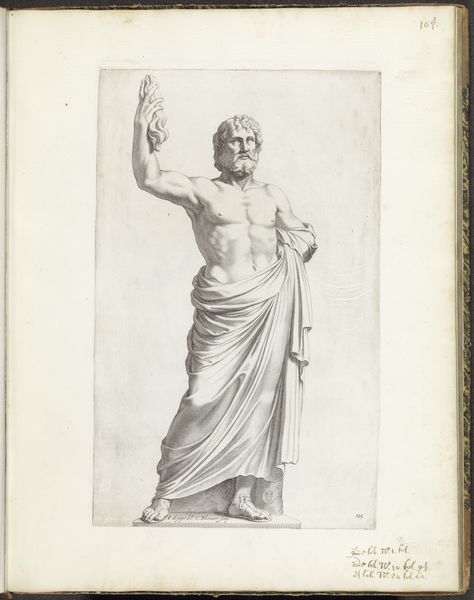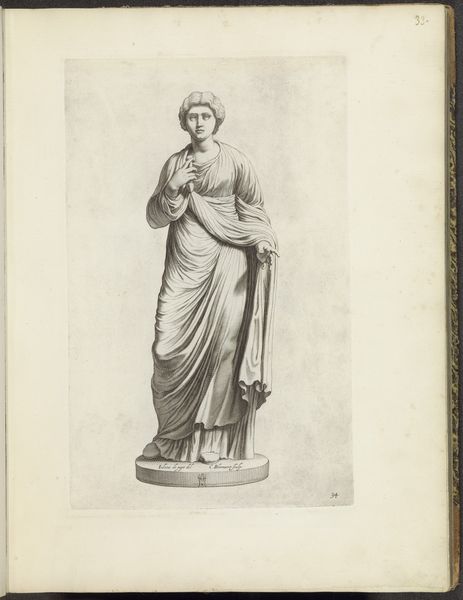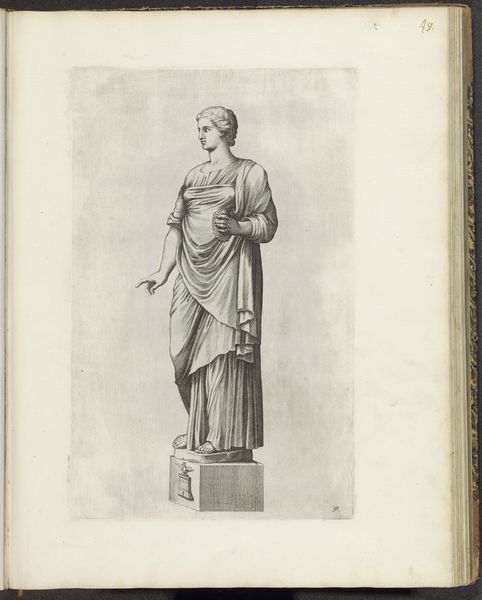
Sculptuur van keizer Tiberius in de Vaticaanse Musea te Vaticaanstad before 1882
0:00
0:00
print, photography, sculpture, gelatin-silver-print
#
portrait
# print
#
greek-and-roman-art
#
photography
#
ancient-mediterranean
#
sculpture
#
gelatin-silver-print
Dimensions: height 141 mm, width 90 mm
Copyright: Rijks Museum: Open Domain
Curator: This fascinating photograph, found in the Rijksmuseum's collection, captures a sculpture of Emperor Tiberius at the Vatican Museums in Vatican City. We believe it was taken before 1882. It's a gelatin-silver print, highlighting the nuances of the marble. Editor: My initial impression is one of thoughtful severity. There’s a weight, both physical and perhaps metaphorical, to the figure; he looks burdened despite the regalia. I wonder about the process of recreating sculpture through photography at this moment. Curator: It is compelling to consider that. What strikes me about the photograph itself is how it makes this marble sculpture feel so... human. I imagine the photographer carefully staged it to showcase the lifelike quality of the emperor. We are looking not only at an emperor but also at his image, mediated by the camera and by the stone. This image of the statue of Tiberius is interesting precisely because we're at least twice removed from the emperor himself. The photographic material serves as another filter layered on top of the sculpting and posing process. Editor: Yes! Think about the labor involved—the quarrying, carving, transport—and then the *staging* you mention and the chemical processes required to create the silver gelatin print. There is something beautiful in this chain of material dependencies across time. Did someone see craft differently, I wonder, with the growing visibility of photography, industrial means of producing the gelatin, and increased attention to artistic reproduction? Curator: That's a potent point. Perhaps, by its reproduction via photography, the sculpture’s impact as propaganda has been undermined, almost softened, but still leaves a residue. What kind of impact would a photograph have, showing something monumental reduced to the domestic space of a photograph album? Editor: Or even this very photograph album displayed alongside Tiberius in a museum like the Rijksmuseum? The materiality tells us so much about use and function, which alters our emotional response. Look closely, too, at the reproduction in the printed volume beside the sculpture. Does the presence of a book highlight a cultural consumption that diminishes both subject and viewer alike? Curator: It’s a journey through Roman artistry, the early days of photography, the relationship of representation, material processes, and the echo of a distant empire, wouldn't you agree? Editor: Absolutely. And in the intersection between empire, photography, and printmaking, a beautiful opportunity for understanding craft and the means of production in their own right.
Comments
No comments
Be the first to comment and join the conversation on the ultimate creative platform.
